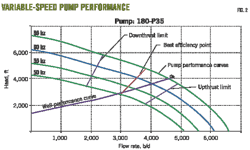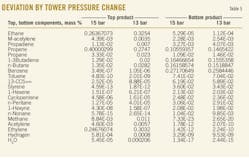Part 1 of this series of three articles dealt with the uses hydrogen and nitrogen found in oil refineries. Some of these uses have been around for a long time and are well known; others are newer, dictated by new and more stringent regulations or by rising energy prices (OGJ, Nov. 23, 2009, p. 50).
This second article deals with the uses of oxygen in oil refineries. All these uses come together under "Process Intensification," which also includes achieving higher flexibility. This becomes increasingly important as the worldwide consumption of fuel is still rising while only few new refineries are being built. Therefore the load on existing refineries rises and spare capacities shrink.
In this situation refiners must minimize new investment for adaptation to the changed economic environment and maximize output from existing equipment. For that goal, process intensification by use of oxygen is an option that includes mature technologies that are cheap to install and easy to operate safely.
Use of oxygen
Hydrogen has always been used in refineries; but oxygen not so much. This is changing for three main reasons:
1. Refiners are reducing excess capacities for better economy. New environmental laws, however, have forced some refineries to add capacities. That is particularly true, for instance, for fluid catalytic cracking to utilize heavy feed oils, and for Claus plants, which receive more sulfur and substantially more ammonia from hydrotreaters. Similarly, the capacity of the waste water treatment plant can be increased by using oxygen.
These applications fall under "process intensification."
2. The higher volatility of crude oil and product prices forces greater flexibility on refiners. Oxygen enrichment allows equipment to be operated in a wider load range. Air-blown Claus plants, for example, can be typically operated within a load range of 30-100%. Even with low-level oxygen enrichment, these plants can tolerate 30-135% load.
3. Oxygen gasification of residues allows full conversion of even the last drop of crude oil to valuable products. This broadens the economic base of a refinery and makes it more flexible and efficient.
Gasification gas can be used for many purposes, especially for hydrogen recovery; as a synthesis gas, particularly in C1 chemistry; and as a fuel in an integrated gasification combined cycle power plant. More recently synthesis gas from a gasifier may also be used for gas-to-liquids processes, which make synthetic, ultralow sulfur fuel.
The following discusses the uses of oxygen in various refinery processes.
FCCU
Fluid catalytic cracking converts heavy hydrocarbons into light ones.4 A refinery operator can use it to shift products between heavy and light, making more diesel fuel or more gasoline, for example. Vacuum gas oil is used primarily as feed to an FCCU but the FCCU can also process residues, thus increasing product yield as well as contributing to useful disposal of it.
At 450° to 650° C., the FCC reactor breaks down hydrocarbons into hydrocarbons with shorter chains. The reaction produces coke as a by-product and deposits it on the catalyst. The coke is removed by burning at 550° to 750° C. in regeneration. Then the regenerated catalyst can be returned to the reactor.
Fig. 1 shows an FCC plant.
Developments with respect to clean fuels and fewer emissions also affect the FCC process:
• FCC regeneration is one of the major sources of sulfur dioxide emissions in a refinery. They can be eliminated either by improving cleanup of waste gas from the FCCU or by reducing the sulfur content of feed to the unit.
In waste-gas cleanup, which usually uses sodium hydroxide, sulfur dioxide is bound to sodium hydroxide and then flows into the waste water. Emissions, in other words, move from the atmosphere to the waste water.
This may be acceptable under regulations, but it is certainly not an environmentally favorable disposal. More preferable is severe hydrogenation of the FCC feeds in the hydrotreaters and recovery of the sulfur as a product. Then the vacuum gas oil, with distinctly lower sulfur content, produces fewer emissions from the FCC regenerator.
• The FCC is important for increased production of middle distillates. In particular, it can provide for better yields and reduction of residues by mixing in heavy feedstocks. But that requires more capacity and flexibility, both in the reactor and in the regenerator. Use of oxygen enrichment in regeneration can contribute substantially (Fig. 2).
• Oxygen enrichment in the FCC also helps improve efficiency by increasing capacity and flexibility in choice of feed oils to the FCC. Fig. 2 shows how oxygen enrichment in regeneration increases FCC capacity.
It also shows that the degree of conversion increases at constant feed volume with oxygen enrichment to 27 vol % in the regeneration air (solid arrows). To maximize the throughput of feedstock, one can increase the feed by about 10% (dotted arrow in Fig. 2) with a constant degree of conversion.
Conclusion: Oxygen enrichment in FCC units allows the refinery operator to increase the FCC capacity for greater throughputs, obtain higher flexibility in choice of feedstocks, and use heavier feedstocks.
Experience
Several major FCC units operated in oxygen enriched mode have provided operational examples.
A refiner with its own port on the Mediterranean Sea buys crude oils from the spot market and therefore treats a great variety of crudes. He uses oxygen enrichment primarily to increase flexibility in the FCCU capacity. It allows the company to operate the FCC up to 130% of the nameplate load. Correspondingly, oxygen consumption varies in a wide range (Fig. 3).
Before starting oxygen enrichment in its FCCU, a Spanish refinery conducted experiments to obtain experience with the reaction of the plant and to see whether its operators could cope with oxygen enrichment.
For the purpose, a test program was carried out varying operating parameters (Table 1). Table 2 shows the economic results of the tests.
As the results were positive, both with respect to technology and economy, the refinery decided to opt for oxygen enrichment whenever needed.
In a Chilean FCCU, the refinery tested increasing feed capacity by 15% using oxygen enrichment. As a result, the gasoline output increased by 30% and naphtha by 15%. The step reduced both fuel gas and coke.
As the operation is so economically attractive, the refinery has continued since the test without interruption for more than 4 years. As a result, the refinery is consuming about 45 tonnes/day of oxygen, which is all the O2 the nearby air-separation unit can provide.
Claus plants
Claus plants convert toxic hydrogen sulfide to elemental sulfur. They can also eliminate pollutants, particularly by converting ammonia to harmless materials, such as nitrogen and water.2 3 Fig. 4 shows a Claus plant.
Existing Claus plants in refineries are usually designed to process highly concentrated hydrogen sulfide fractions with low proportions of hydrocarbons and ammonia. Older plants usually have the Claus units only without tail-gas cleanup. In practice, they have sulfur recoveries of 95-98%. But current European Union specifications require sulfur recoveries of up to 99.5%+ for units with a sulfur capacity greater than 50 tpd. Local authorities may demand even higher recovery rates, up to 99.9+%.
Those values can be achieved only with a tail-gas cleanup, which in turn, causes a higher pressure drop across the entire system. In general, the crude gas pressure cannot be increased much, if at all, because the gas comes from regeneration of an amine scrubber. The pressure there can be increased only by raising the regeneration temperature, which would cause more decomposition of the scrubbing agent and more byproducts. That consequence is unacceptable.
One alternative is to enrich the combustion air in the Claus burner with oxygen. That is in itself nothing new and is described elsewhere.1 Because of oxygen enrichment, inert nitrogen is kept out of the Claus plant due to less air flow, so that the gas volume and the pressure drop there are reduced compared with the original operation with air. The pressure difference gained by oxygen enrichment can be used to transport the gas through the subsequent tail-gas cleanup.
Oxygen enrichment can also be used to add more crude-gas-compensating reduced air volume. This allows more sulfur to be produced in the Claus plant. Capacity increases can be as much as double.1
Another new and increasingly important function of Claus plants is to dispose of the additional ammonia produced in more severe hydrotreating. That is possible in Claus furnaces but requires higher temperatures, typically greater than 1,300° C., while normal operation is usually at 1,100-1,200° C.
Oxygen enrichment can solve that problem too. The flame temperature is higher when oxygen is used. Fig. 5 shows a typical temperature rise affected by oxygen enrichment: 28% O2 results in a temperature rise of about 120° C.
The proportion of oxygen can be varied so that it ensures attaining the temperature needed to break down ammonia while still being tolerated by the furnace walls.
Conversion of existing Claus plants from use of air to oxygen enrichment is substantially less expensive than building new plants designed for the new limits. It can be assumed that conversion costs less than 10% as much as a new plant.
The oxygen is provided in the conventional manner from a tank, a pressure-swing adsorption system, or a pipeline. The optimal choice of the supply depends on the conditions at the site of the Claus plant. In most cases, however, a tank is the best choice.
One must consider that strong seasonal changes often occur in the loading of Claus plants. It is the average load of the Claus plant, not the peak load, that should be used as the basis for selection of the type of supply. That is because one needs oxygen addition only at more than 100% nameplate capacity.
As a specific example, the oxygen feed at full load was 1,000 standard cu m/hr but only 300 scm/hr at 80% load. One would probably choose a PSA supply for the peak value of 1,000 scm/hr, but in this case a tank supply would be distinctly more economical and can provide the peak value of 1,000 scm/hr with no problem.
Conclusion: Oxygen enrichment in Claus plants offers the following advantages to a refinery operator:
• Increased capacity in the Claus plant, so that the sulfur capacity can be increased by up to 100%.
• Higher flame temperature from the Claus burner, giving better conversion of pollutants, especially of ammonia.
• Lower volume of gas from the Claus plant that reduces the load on the tail-gas treatment process and fuel requirement in the incinerator.
Experience
The number of Claus plants with oxygen enrichment is large already with probably more than 200 in operation. Among them are several second and third-time buyers that are content with the operation of their plants. Before installation, many of the refiners conducted tests to gain first-hand experience before choosing continuous oxygen enrichment.
The necessary hardware for testing is available for rental from the major gas companies. Especially the liquid oxygen tank, vaporizer for the liquid oxygen, and Linde's Flowtrain to meter the oxygen into the Claus plant are usually available on short notice.
The tests facilitated an overview of the Claus burner systems on the market and their abilities to convert ammonia. Measurements by Linde showed that ammonia-conversion efficiency may vary from factors of about 50/1. (ammonia in/ammonia out) to about 35,000/1. Fig. 6 shows a typical example.
Choosing the right burner and furnace configuration is important in avoiding such ammonia-related problems as corrosion and plugging by ammonium salts. Fig. 7 shows an example of an inefficient burner. Comparing it with Fig. 6 makes clear that the burner by Manufacturer A is more efficient in converting ammonia than Burner B.3
Why efficiencies of different burners may differ so much can be understood from the temperature profile in a furnace in which a conventional burner with two concentric lances was measured in comparison with a high-turbulence burner. Fig. 8 shows the results.
The measurements prove that for the conventional two-lance burner, the temperature distribution is uneven, while for the high-turbulence burner the temperature profile is flat. Correspondingly, gas distribution in the reaction chamber is uneven for the conventional burner so that not all the ammonia molecules meet the necessary oxygen molecules.
Therefore conversion remains unsatisfactory. For the high-turbulence burner, however, better conversion conditions prevail, allowing only small traces of ammonia to slip through.
Partial oxidation
The principal function of partial oxidation is to convert liquid or solid hydrocarbons to hydrogen, carbon monoxide, carbon dioxide, and water by gasification.5 Then the product gas can be used as synthesis gas, as fuel gas, or as crude gas for hydrogen recovery. Fig. 9 shows a partial-oxidation unit.
In the process, solid or liquid hydrocarbons are burned in the gasifier with less than stoichiometric amounts of oxygen. This produces high temperatures at which the large molecules are broken up so that the product gas contains hydrogen, carbon monoxide, carbon dioxide, and water.
The gas is cooled and contaminants are removed in various cleanup processes. The flow diagram shows a gas scrubber for removing hydrogen sulfide. The purified gas is available for further use. In particular, the carbon monoxide can be converted almost completely with water to hydrogen and carbon dioxide in a carbon monoxide shift (CO + H2O CO2 + H2) which can compensate for a deficit of hydrogen in the refinery.
With respect to new developments, partial oxidation opens up several possibilities for refinery operators:
• Heavy heating oils and residues in particular can be used as feedstock to partial-oxidation plants in refineries. They can be operated practically with no limit to the pollutant content so that the feedstocks can be used economically.
Previously, the principal users of the heavy heating oils and residues were power plants and ships. That market is vanishing because those former users must also convert to low-sulfur fuels. Costs of burning high-sulfur fuels in power plants are steadily increasing because requirements for purity of waste gases are increasing and, with them, the cost of purification. In spite of the increasingly higher costs of low-sulfur fuels, power plant operators often find that the reduced cost of waste-gas cleanup makes them more economical than cheaper but higher-sulfur fuel.
Emission of sulfur dioxide by ships, although unlimited on the high seas, is now being limited in coastal areas so that ships can no longer use high-sulfur diesel fuels. Both developments mean that the refinery operator either cannot sell high-sulfur heating oils or residues at all or it can sell them only at a low price. Using them in partial oxidation can, accordingly, both improve the refinery hydrogen balance and economically get rid of high-sulfur oils and residues.
• Gas from partial oxidation can be used for fuel in an integrated gasification combined cycle power plant.5 This kind of power plant has particularly high efficiency and its emissions are low in pollutants. Typically, a refinery with a crude oil capacity of 10 million tpy can supply an IGCC power plant with a power of about 350 Mw.
That gives the refinery another leg to stand on. It broadens the economic base, and the refinery can react more flexibly to market requirements.
• Gasification gas from partial oxidation can also be used as a synthesis gas. For instance, it can be used, after appropriate pretreatment, for synthesis of gas to liquid, that is, production of synthetic diesel or gasoline, for methanol, or for ammonia production. This use of partial oxidation to produce chemicals also broadens the economic base of the refinery.
• Partial oxidation can handle differing feedstock compositions, within wide limits. That makes it possible to use crude oils of different qualities in the refinery and to feed residues that cannot be utilized economically in the usual refining procedure.
Not every refinery has its partial-oxidation unit, in spite of these advantages, because of the high capital investment for such a unit and that it must result in greater economic utility before it can pay off with the existing structure of a refinery. Especially for GTL, the fast rising crude oil price made production of these synthetic fuels increasingly more attractive. Of course production of this additional ultraclean fuel fits perfectly into the palette of products of a refinery.
Use of oxygen in partial oxidation thus can bring the refinery operator several advantages:
• Cleaner and more advantageous reuse of residues.
• Broadening of the economic base of the refinery.
• Wider range of products and thus greater economic flexibility of the refinery.
• A wider range of crude oil compositions to be processed.
Waste water treatment
Oxygen deficiency causes many problems in waste water treatment. Refineries, in particular, with their usually highly loaded waste waters, find treatment capabilities rapidly becoming insufficient, and degradation processes often become anaerobic, with substantial odor emissions. These problems cause conflicts with local authorities and population.
Industrial oxygen can help to solve these problems. Solutions have already been attained for:
• Meeting peak loads in activated sludge plants with pure oxygen.
• Nitrogen elimination with pure oxygen by intermittent, simultaneous, or upstream denitrification.
• Pure oxygen for emergency use or for conversions of waste water treatment plants.
• Pure oxygen for waste water prepurification.
• Pure oxygen for conveying waste water in pressure pipes.
The oxygen required is usually injected via Venturi nozzles. The particular advantages of such system are its low capital investment and the flexible matching of oxygen supply to momentary need.
One example is process conversion of the waste water treatment plant of a refinery to nitrogen elimination using industrial oxygen. In a specific case, the treatment plant has three activated sludge basins with a total volume of 4,280 cu m. The waste water throughput is 240 cu m/hr. A 30% reserve was required in the design.
The biological oxygen demand (after keeping the sample in complete darkness at ambient temp for 5 days; BOD5) before treatment was 150 g/cu m, with a chemical oxygen demand of 800 g/cu m and total nitrogen of 146 g/cu m. Effluent values must be guaranteed at BOD5 < 3 g/cu m, COD < 30 g/cu m, and Ntotal < 5 g/cu m.
The intermittent denitrification process was employed in the conversion. In that process, the denitrification is done in the same basins as nitrification, but the oxygen input is cut off in the denitrification phase. Eight such injection systems can introduce 400 kg/hr of oxygen. Injecting pure oxygen makes up to 24 cycles/day possible. This ensured the required effluent values.
References
1. Reinardt, H.-J., and Heisel, M., "Increasing the capacity of Claus plants with oxygen," Linde Reports on Science and Technology, No. 61 (1999), p. 2 ff.
2. Paskall, H.G., and Sames, J.A., "Sulfur recovery by the modified Claus process," The Sulphur Experts, 12th Edition, Calgary, 2009.
3. Heisel, M., Schreiner, B., and de Lourdes Conde, M., "Debottleneck operations due to ‘clean fuels' production," Hydrocarbon Processing, Vol. 86 (2007), No. 2, pp. 87-96.
4. Sadeghbeigi, R., "Fluid Catalytic Cracking Handbook," Houston: Gulf Publishing, 1995.
5. Haussinger, P., Lohmuller, R., and Wernicke, H.-J., "Wasserstoff" [hydrogen], Weinheim: Ullmann's Encyclopedia of Industrial Chemistry, 1983; Vol. 234, pp. 243 ff.
6. Perez de Haro, Juan, et al., "O2 enrichment increases FCC operating flexibility," OGJ, May 11, 1992, p. 40.
More Brand Name Current Issue Articles
More Brand Name Archives Issue Articles
View Oil and Gas Articles on PennEnergy.com












